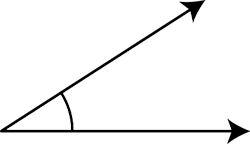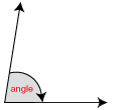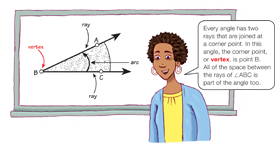Students build upon their angle measurement and estimation skills by measuring the angles inside polygons and exploring the relationship between the angles in a triangle. They also begin to classify shapes, starting with the classification of triangles based on their angle measures.
Content in this Lesson
- Identifying shapes that are polygons [E5, E6].
- Measuring angles in a polygon [E12].
- Finding the sum of the angles in a triangle [E1].
- Finding a missing angle measure in a triangle [E1].
- Classifying acute, obtuse, and right triangles [E2].
- Using addition and subtraction to find unknown angles [E1].
Daily Practice and Problems K–P
Assessment in this Lesson
| Assessment | Expectation Assessed | Math Practices Expectation Assessed |
|---|---|---|
|
Lines, Angles, and Polygons Quiz with Feedback Box |
|
|

























